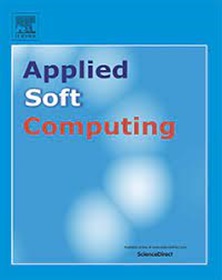Contrastive learning-guided hashing model for artwork image retrieval
IF 7.2
1区 计算机科学
Q1 COMPUTER SCIENCE, ARTIFICIAL INTELLIGENCE
引用次数: 0
Abstract
With the growing demand for spiritual enrichment, artwork retrieval has gained increasing popularity in computer vision. While current quick response (QR) code-based and deep learning-based methods enable real-time artwork recognition, their dependence on manual annotations limits adaptability and scalability. In this paper, we propose an unsupervised hashing-based artwork retrieval framework that requires no manual labeling and adapts to new classes. The system comprises two key components: a detection module and a retrieval module. The detection module processes user-captured artwork images by predicting polygonal bounding boxes and rectifying them through perspective transformation algorithms. The retrieval module is the focus of our research. We present a novel contrastive learning framework for artwork retrieval that integrates a convolutional neural network (CNN) based feature extractor and a hashing encoder–decoder structure. This architecture processes input images into both floating-point and hashing representations while maintaining a binary memory bank for efficient similarity matching. Two specialized loss functions facilitate adaptive hashing encoding, aligning floating-point and hashing features through an unsupervised learning process. We evaluate our framework on a self-built dataset containing over 24k images spanning traditional Chinese paintings, oil paintings, and Chinese chops. The samples are unlabeled and there is only one image of each artwork. Comparative experiments with state-of-the-art methods demonstrate our system’s superior effectiveness and strong potential for practical artwork retrieval applications.

艺术品图像检索的对比学习导向哈希模型
随着人们对精神充实的需求日益增长,艺术品检索在计算机视觉中越来越受欢迎。虽然目前基于快速响应(QR)代码和基于深度学习的方法能够实现实时艺术品识别,但它们对手动注释的依赖限制了适应性和可扩展性。在本文中,我们提出了一个无监督的基于哈希的艺术品检索框架,该框架不需要手动标记并适应新的类。该系统由两个关键部分组成:检测模块和检索模块。检测模块通过预测多边形边界框并通过透视变换算法对其进行校正,对用户捕获的艺术品图像进行处理。检索模块是我们研究的重点。我们提出了一种用于艺术品检索的新型对比学习框架,该框架集成了基于卷积神经网络(CNN)的特征提取器和哈希编码器-解码器结构。该体系结构将输入图像处理为浮点和散列表示,同时维护二进制内存库以实现有效的相似性匹配。两个专门的损失函数促进自适应哈希编码,通过无监督学习过程对齐浮点和哈希特征。我们在一个自建的数据集上评估我们的框架,该数据集包含超过24k的图像,涵盖传统中国画、油画和中国印章。样品没有标签,每个艺术品只有一张图片。与最先进的方法对比实验表明,我们的系统在实际艺术品检索应用中具有卓越的有效性和强大的潜力。
本文章由计算机程序翻译,如有差异,请以英文原文为准。
求助全文
约1分钟内获得全文
求助全文
来源期刊

Applied Soft Computing
工程技术-计算机:跨学科应用
CiteScore
15.80
自引率
6.90%
发文量
874
审稿时长
10.9 months
期刊介绍:
Applied Soft Computing is an international journal promoting an integrated view of soft computing to solve real life problems.The focus is to publish the highest quality research in application and convergence of the areas of Fuzzy Logic, Neural Networks, Evolutionary Computing, Rough Sets and other similar techniques to address real world complexities.
Applied Soft Computing is a rolling publication: articles are published as soon as the editor-in-chief has accepted them. Therefore, the web site will continuously be updated with new articles and the publication time will be short.
 求助内容:
求助内容: 应助结果提醒方式:
应助结果提醒方式:


